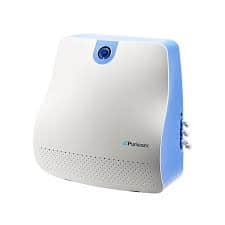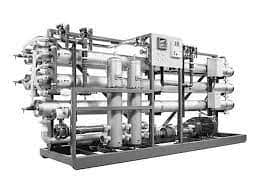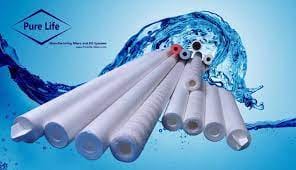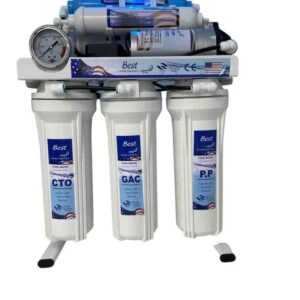Ro system parts
Buy on whatsappDescription
Components of an RO System
When it comes to RO systems, several crucial parts work together to deliver purified water. Let’s delve into each of these components:
1. Pre-filters
Pre-filters are the first line of defense in an RO system. They typically consist of sediment filters and activated carbon filters. Sediment filters remove larger particles like dirt, rust, and debris, while activated carbon filters remove chlorine, odors, and organic contaminants. Pre-filters help protect and prolong the lifespan of the RO membrane.
2. RO Membrane
The RO membrane is the heart of the system. It effectively removes dissolved solids, contaminants, heavy metals, and even microscopic impurities from the water. The semi-permeable membrane allows water molecules to pass through while blocking impurities, ensuring high-quality water output.
3. Post-filters
Post-filters are responsible for further polishing the water after it passes through the RO membrane. They often include a carbon filter or a remineralization filter. Carbon filters remove any remaining odors or tastes, while remineralization filters add essential minerals back into the water, enhancing its taste and quality.
4. Flow Restrictor
The flow restrictor regulates the water flow through the RO system. It helps maintain proper pressure within the system, allowing the RO membrane to function optimally and ensuring efficient purification.
5. Storage Tank
The storage tank holds the purified water until it is needed. It allows for a steady supply of clean water without the need for continuous filtration. The tank is typically pressurized, ensuring water flows smoothly from the faucet when required.
6. Faucet
The faucet is the final point of access for the purified water. It dispenses the RO-treated water for various uses such as drinking, cooking, and other household activities.
7. Tubing and Fittings
Tubing and fittings are essential for connecting the different components of the RO system. They ensure a secure and leak-free connection between the pre-filters, RO membrane, post-filters, flow restrictor, storage tank, and faucet.
8. Pressure Gauge
Some RO systems feature a pressure gauge to monitor the pressure levels within the system. This gauge helps identify any fluctuations or issues that may affect the system’s performance and efficiency.
Conclusion
Understanding the different parts of an RO system is crucial for maintaining its efficiency and ensuring clean and safe drinking water. Each component plays a vital role in the water purification process, from the pre-filters that remove larger particles to the RO membrane that eliminates microscopic impurities. By familiarizing yourself with these RO system parts, you can better appreciate the technology behind the purification process and make informed decisions about your water treatment needs.





